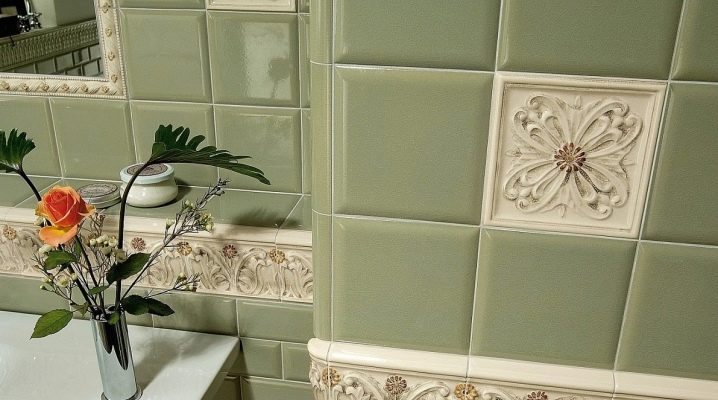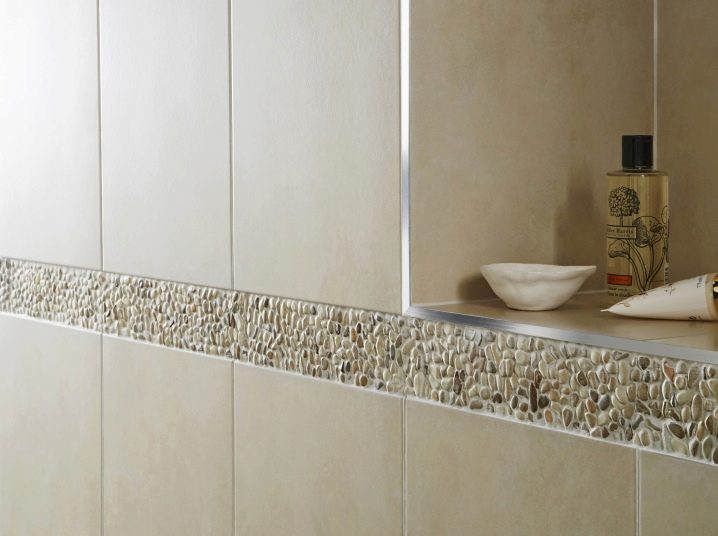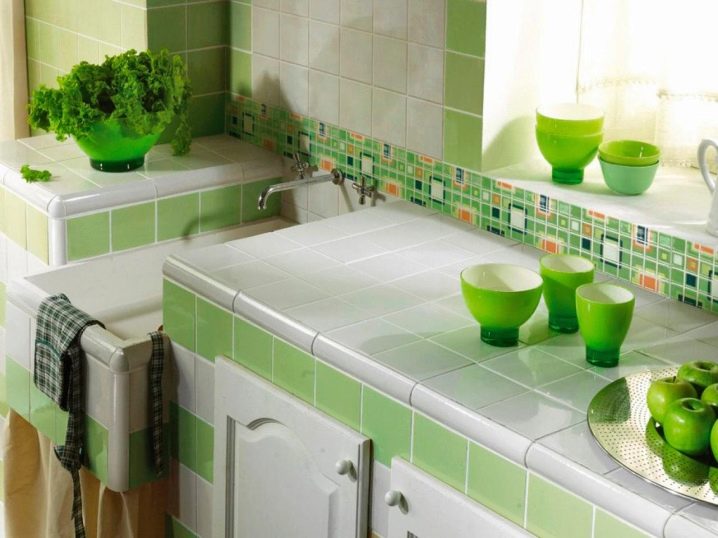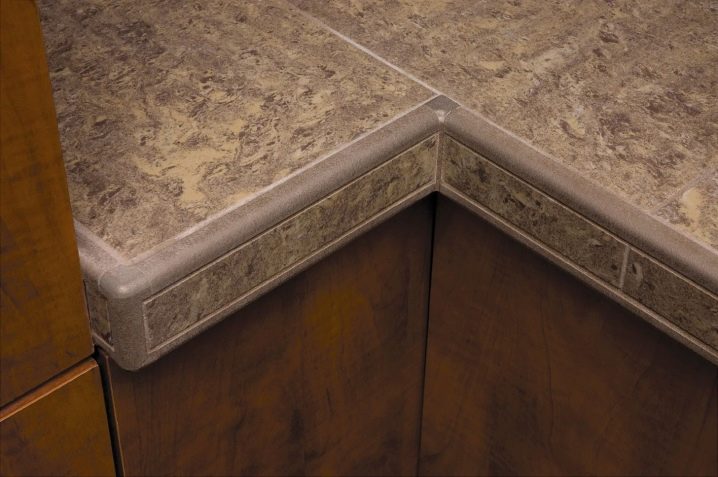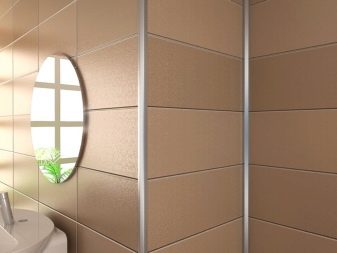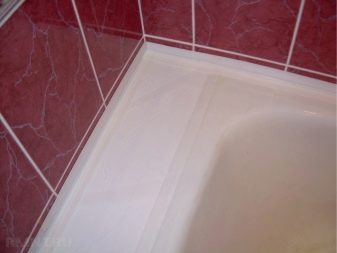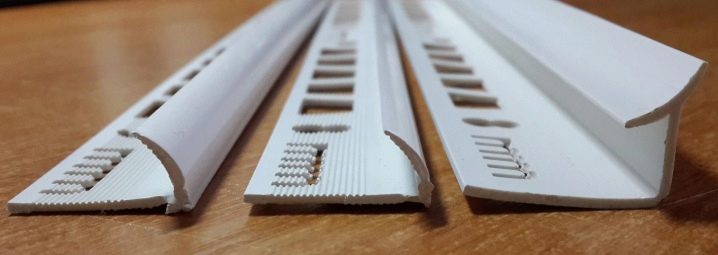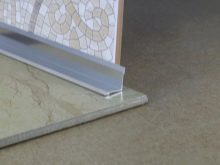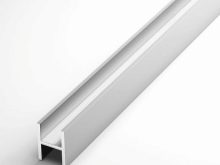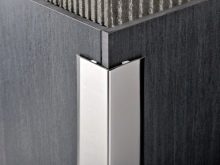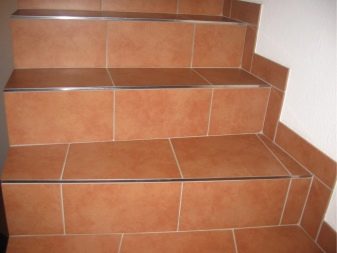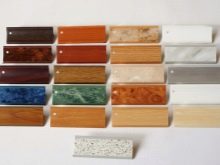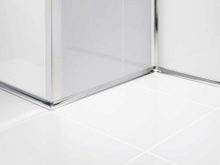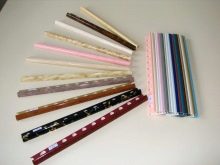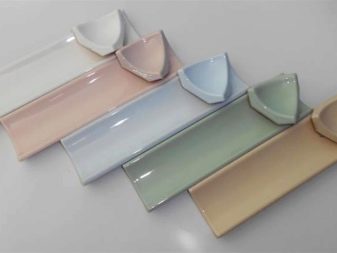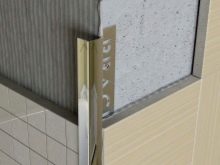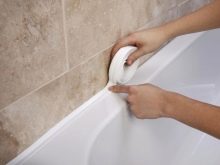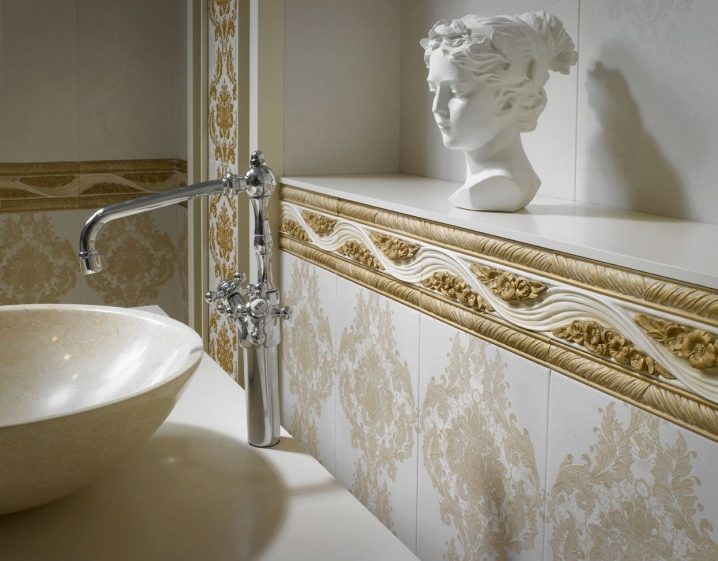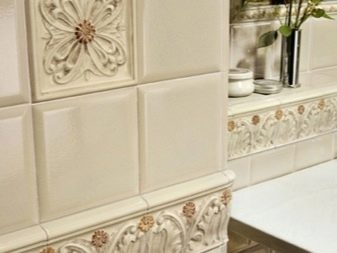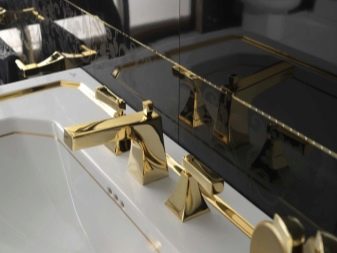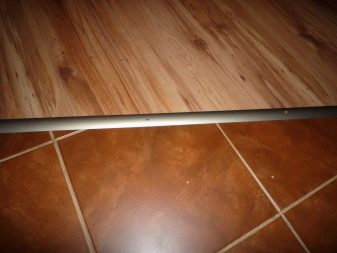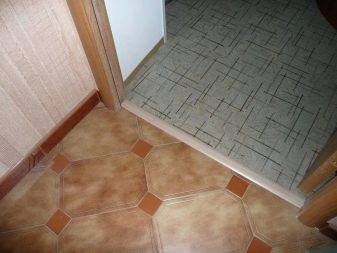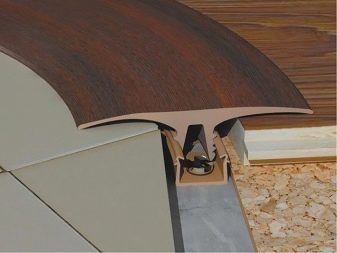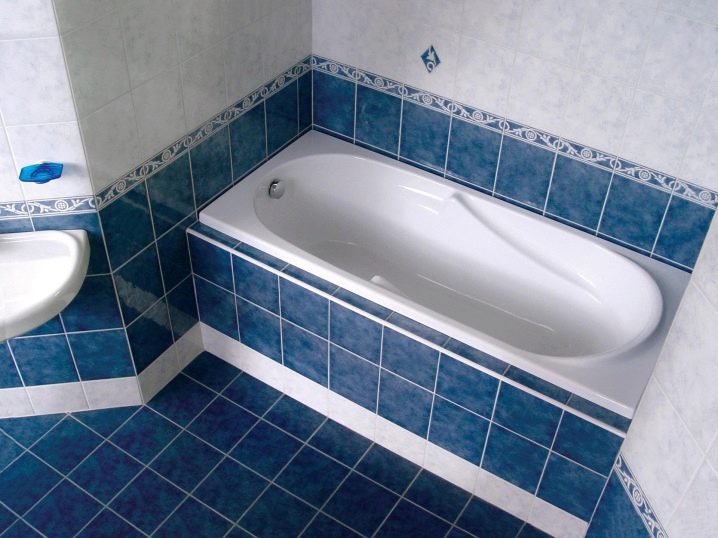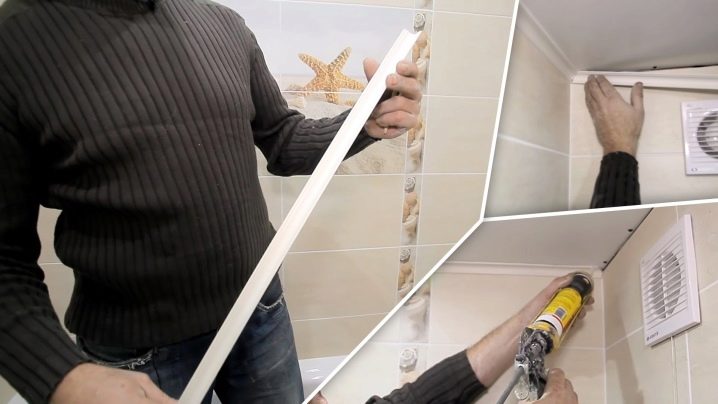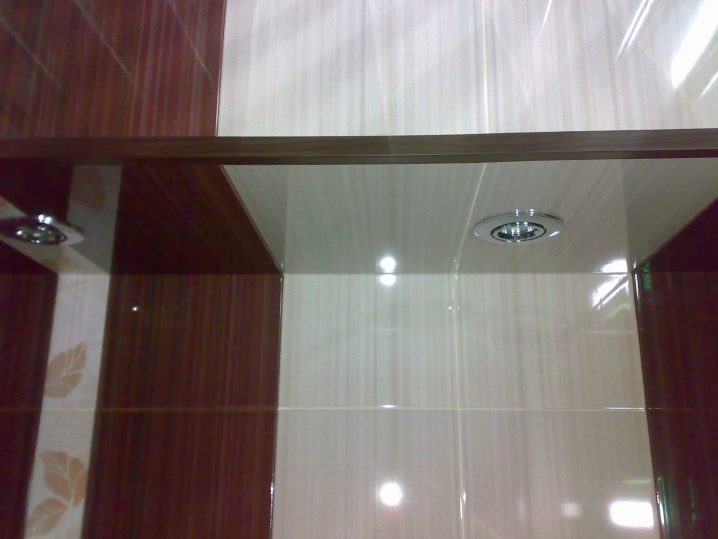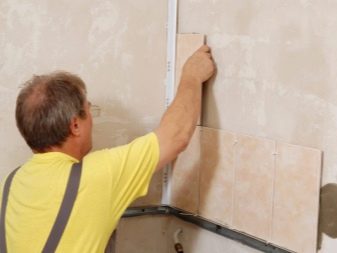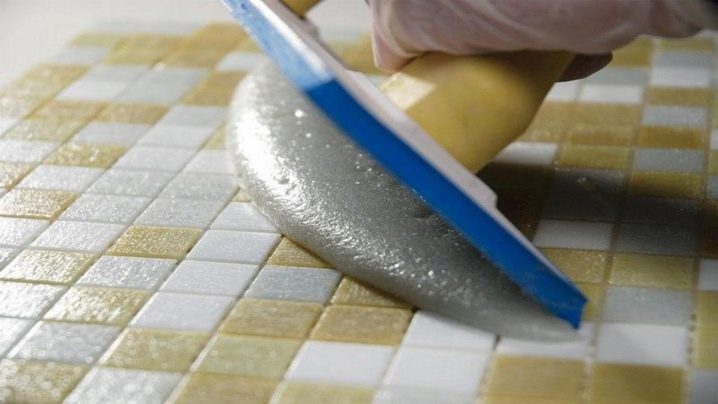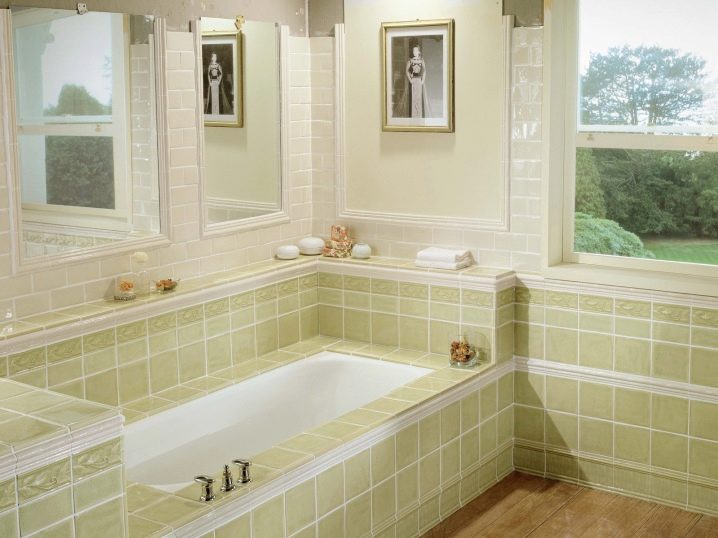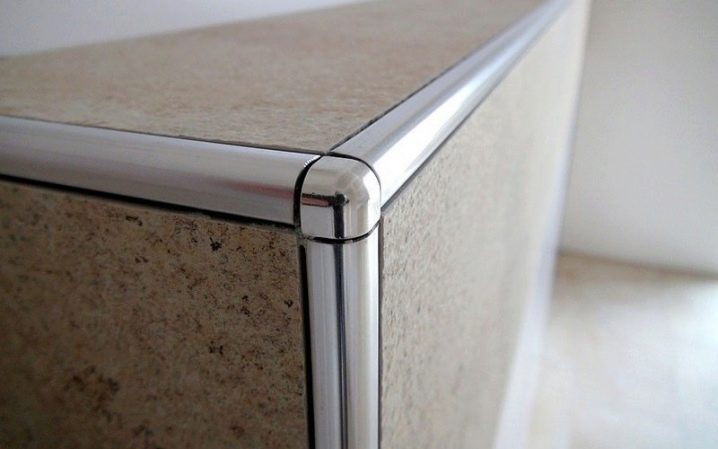Corner for tiles: which one is better to choose?
Renovation of the kitchen and bathroom is most often carried out using ceramic tiles. In such rooms, it is simply indispensable. However, the matter is not limited to ceramics. Only with the use of additional elements the room acquires an aesthetic appearance, it becomes safe and secure. One of these elements is a corner.
Special features
If you do not use the corners at the junction of the walls and in the corners, then the appearance of the room will be incomplete. They are not only an aesthetic function, masking the possible shortcomings made during the work. Such corners protect the tile from possible chips, protect from mold and mildew, which can appear in wet conditions. Besides, they smooth out irregularities and dangerous protrusions, which in the future will be able to protect the user from possible injuries.
With proper tile laying masters will most easily cope.However, with a little construction skill, well-chosen instructions, a general idea of this procedure, and a strong desire, this task is up to the power and non-professional.
The skills of the master and the quality of the tiles are certainly important. However, additional details, both decorative and functional, are in some cases capable of having a sufficiently strong influence on the appearance of the room. When using corners, you can achieve reliable and efficient joining of tiles, much better and more beautiful than with other methods of connection.
The decoration of the room with corners gives the accuracy and completeness of the main coating. With their help, you can aesthetically design complex areas. They are used both during tile laying works and after their completion.
It is with the help of the corners that you can emphasize the chosen pattern and create the visual completeness of the masonry. Most often in such cases, the choice is made in favor of aluminum corners, but you can use analogues from other materials.
Types and sizes
Corners can be divided into external, installed on convex corners and carrying more aesthetic function, and internal - concave shape and used for internal corners, and in addition, to align the corners at the junction of the tile and bathroom.
External corners are used in work in the case when protrusions appear at the point of convergence of two walls at right angles. Such products have a rounded shape, which prevents injury to a person from sharp ceramic corners and damage to the tile itself in the future.
The main dimensions of the elements (length and width of the shelf) - 7, 9 and 11 mm, length 2.5 m. One side of the product has a groove for tile, the other performs a decorative function and protects the plates from external influence. Decorative elements can be made of plastic, aluminum and many other materials. May be white or any neutral color.
Internal elements are used to design the corners of the room itself and are mounted between the corner joints of the tile. They have a standard width of 1 cm and are adjustable if necessary. They carry a protective function, do not allow the ingress of water, which, in turn, prevents the walls from the formation of fungus and mold. Easy to clean with any detergent.
Profiles for tile perform both technical and decorative functions. They simplify the installation of tiles and are also protected from external influences.. Distinguish U-shaped, T-shaped, L-shaped and H-shaped types of profiles. L-shaped is angular, it is used in the joints of vertical and horizontal coverage. T-or H-shaped is a separator insert and docks the floor covering on the same level. U-shaped is used in the process of finishing works.
There is no unequivocal answer to the question about the use of profiles and corners on the steps. They can be ordinary, as in the case of wall or overhead. Ordinary carry a decorative function, protect the joints, but the life of the stairs when using them can be reduced as a result of the fact that the accumulated water over time destroys the main material.
Overhead is more functional, prevent slipping.
Materials
Among the corners (layouts for tiles) there are decorative (most often PVC, less often ceramic) - to give beauty, different colors and shapes, and functional, durable, varieties.
- Aluminum corners are versatile, have a neutral color and give more space for the designer. Perfectly combined with a wide color palette of tiles and sanitary equipment. Can be combined with various spraying.The advantages of the material in its lightness, increased strength in comparison with plastic, as well as resistance to corrosion.
- Main properties PVC (or plastic corners) - flexibility and lightness. Available in different colors, they can be installed at any stage of work. Another plus is a wide range of models of this type. Plastic resistant to moisture, easy to handle. However, if this species is accidentally inflected, this may affect the entire structure. It perfectly fixes, provides insulation and is an element of decor.
- Metal corners used together with heavy rectangular tiles, as they calmly carry heavy loads. However, in this case, the masonry should be perfectly flat, as it is not easy to bend such products. There are brass and stainless steel.
Stainless steel elements are durable and feature high density. Most often they have gold and silver color, but they are also found in bronze, chrome, nickel-plated and brass. Easy to paint.
- Ceramic corners most often have a decorative function and are used in compositions. They are characterized by patterned design.However, they are quite fragile and are not able to withstand shock loads.
The design features of the corners are divided into hard, soft and semi-rigid:
- Tough Products made of metal and aluminum are considered. Initially, they are not painted and have a natural color. The cost of raw materials is high enough in comparison with other types, which affects the price of the finished product.
- Semi-rigid - These are elements made of plastic. They are light enough and flexible, they have various color shades, they are easily painted. Extremely rarely such products are found in black.
- Soft the corners are also plastic, but their difference is in the silicone edges. They are considered universal, can be used when working with any tiled surfaces.
Of particular interest are decorative moldings. They are volumetric smooth or patterned products that, if necessary, are combined into a single composition according to the identity of the pattern. May reflect a certain style of interior. Made of various materials.
Molding is used for masking at the junction of materialshaving different colors and texture, as well as to create compositions on surfaces. Good hides defects and attracts attention. The elements used to hide the joints of the two planes of the room (ceiling, wall and floor) are called floor and ceiling plinths. When joining directly to floor coverings, metal and plastic moldings are mainly used.
Application
Corners are laid directly during installation of the tile. The use of additional fasteners is not necessary, since they are held by the adhesive composition and the coating itself. There are no special difficulties in working with these elements - they are fixed simply, however, need to be careful and attentive when installing them.
Depending on the goal that the designer wants to achieve, different types of products are used. To close possible defects and to give to an accuracy to a general view, plastic models are used. Ceramics used for decorative functions, helps to give luxury and elegance to the decoration of the apartment. Brass and chrome are relevant to the retro style.
Often there is a need to dock different surfaces, for example, when moving from a bathroom to a corridor it can be tile and laminate.
If during repair it becomes necessary to divide the surface into zones, this can be done in various ways. The most popular and simplest option is to use a threshold. It can be made of various materials, have different sizes and properties. When installing these thresholds are also used profiles, which, as a rule, are mounted on fasteners.
Most often, the joint is closed with a metal or plastic docking nut, which is fastened with screws. Its installation does not require special skills. Also, a similar junction of two different surfaces can be closed with a flexible profile that looks like two T-shaped halves - one at the bottom, the other is inserted from above, which does not require the use of additional elements.
And finally the method of docking with a “liquid profile” is gaining wide popularity. It is a waterproof mixture of elastic glue and cork.
Installation
In order for the corners to look even after laying the ceramic tile, it is necessary to use the edging in the form of profile corners. When carrying out repairs, the master himself determines whether to start with the installation of the corners or laying the tiles.You can install these elements at the same time with the tile, and can be on top of it. The second method is simpler, but it is only facing.
In any case, marking and zapilivanie joints of tiled corners plays an important role, because it depends on this, how smoothly and accurately the tile will be laid out.
When selecting corners, it is necessary to emphasize their compliance with the size of the tile in order to avoid problems during installation. Initially, the product is mounted on a special glue, you can use adhesive tape. The same glue necessarily fill the voids in the structure.
As for the metal corners, deformed products cannot be used, this may affect the appearance at the finishing stage. Laying profile has a positive effect on the strength of the finished coating. It is advisable to start work with an open wall, which focuses attention upon entering the room. It is necessary to make accurate measurements before the start of repair, it will help to minimize tile trimming and other corrective moments in the future.
The corners should be one to two millimeters thicker than the tile itself, so they fit the notch.
The installation scheme of external and internal elements differs:
- The outer corner of the desired size is applied to the corner of the wall, a tile is placed in both its channels and the necessary marks are made. After this, the tile is removed, and the profile is precisely laid on the labels already on the glue. Next, the adhesive is applied to the tile itself, which is applied to the grooves and pressed tightly. Excess glue must be removed from the outer surface, and then, using adhesive tape, both tiles and the corner are fixed until dry.
- When installing the inside corners, tile adhesive is applied to the tile itself and to the wall where the element will be laid. Then a corner is placed in the required place, and the tile is glued to the profile channel. The use of a building cross is necessary for the gap between the tiles to be even and clear. After that, another tile is glued and left to dry completely for 24 hours.
In both cases, after finishing the work and after the end of the day, decorative grouting is recommended. When marking angles of 45 degrees, a triangle is usually used.
During all the tile work, you need to control the location of the corners and, if necessary, make adjustments. After laying, you need to wait 24 hours for the glue to dry out completely.. Then work is evaluated, possible defects are identified. At this stage, minor flaws are eliminated with a tile grout.
How to install the corners on the tiles with their own hands, see the following video.
Tips for choosing
- When choosing corners, it is necessary to take into account all the parameters - material, size, color range.
- First you need to calculate the number of external and internal corners of the room in which the repair will be made. Based on this, the number of corners to be used in the work is laid. Experts advise to add a couple of pieces "in reserve".
- Elements can be of different lengths, they will need to be cut at the ends. As for the thickness, as already mentioned, the area should be one or two millimeters larger than the tile. If the room will be used several types of tile, the corners are selected for each individually.
- As for color, first of all, the color scheme of the tile itself plays a role. Corners can coincide in hue with the main color of the room, as well as contrast with it.It all depends on the ideas of the designer and ideas about the final form of the room. It should be borne in mind that the stores have a wide color assortment of these elements, so when choosing, you can take a sample of the tile with you, in relation to which a shade will be chosen.
- And finally, the material. In addition to the ratio of price and quality, it is necessary to take into account the convenience of processing the element, as well as the aesthetic factor and design idea.
- Ceramic corners work best with a decorative task, they can ideally fit the tile in color and texture, and also give a rich and elegant look to the room. These elements are strong enough, which, however, creates certain difficulties in processing, and have a high price.
- PVC is sensitive to impact, easily bends and is not very reliable in terms of strength. But this is the most unpretentious element during installation and processing, which can be performed with almost any available means. It has a wide variety of colors and the lowest price.
- Metal products are durable and are particularly durable. They look beautiful and expensive. Problems with their processing usually does not arise.
